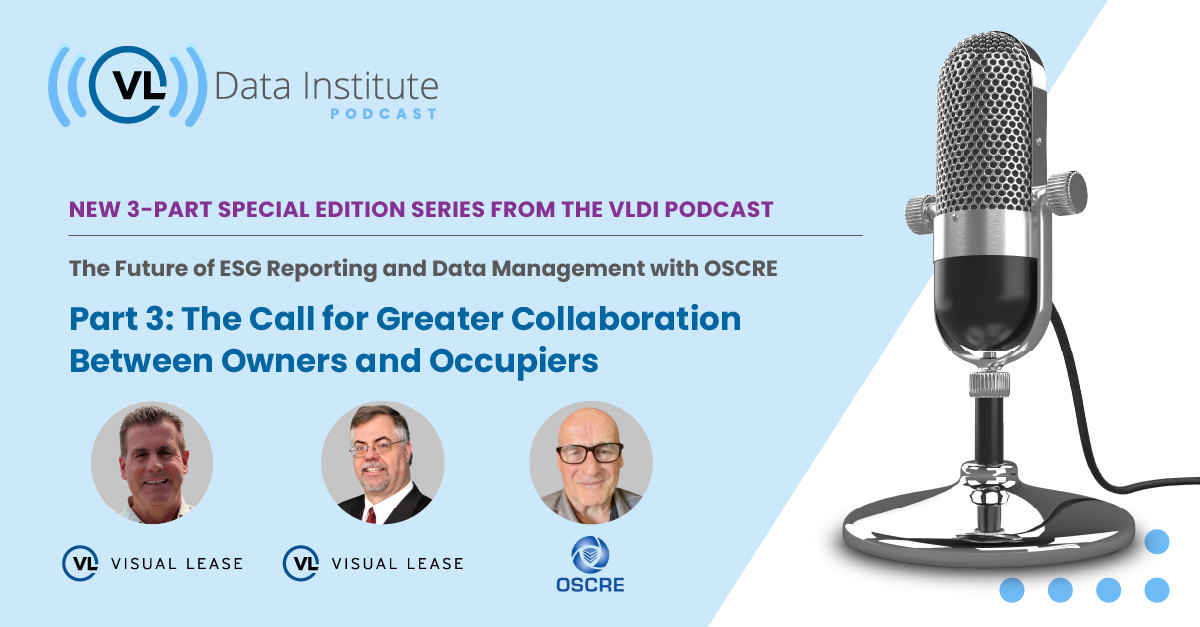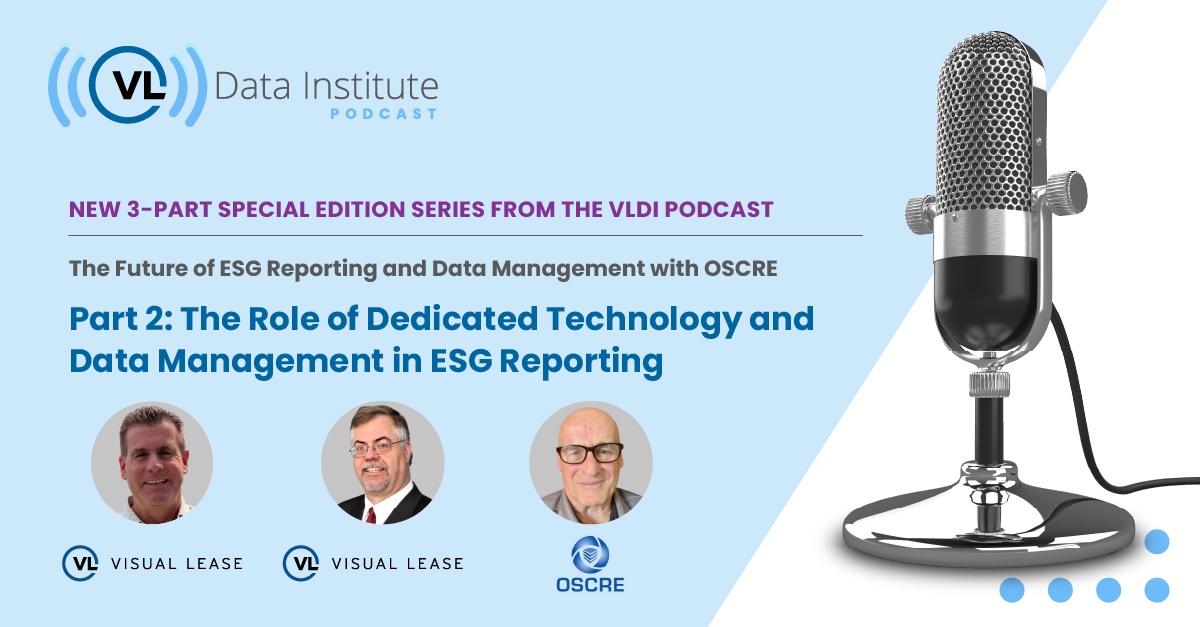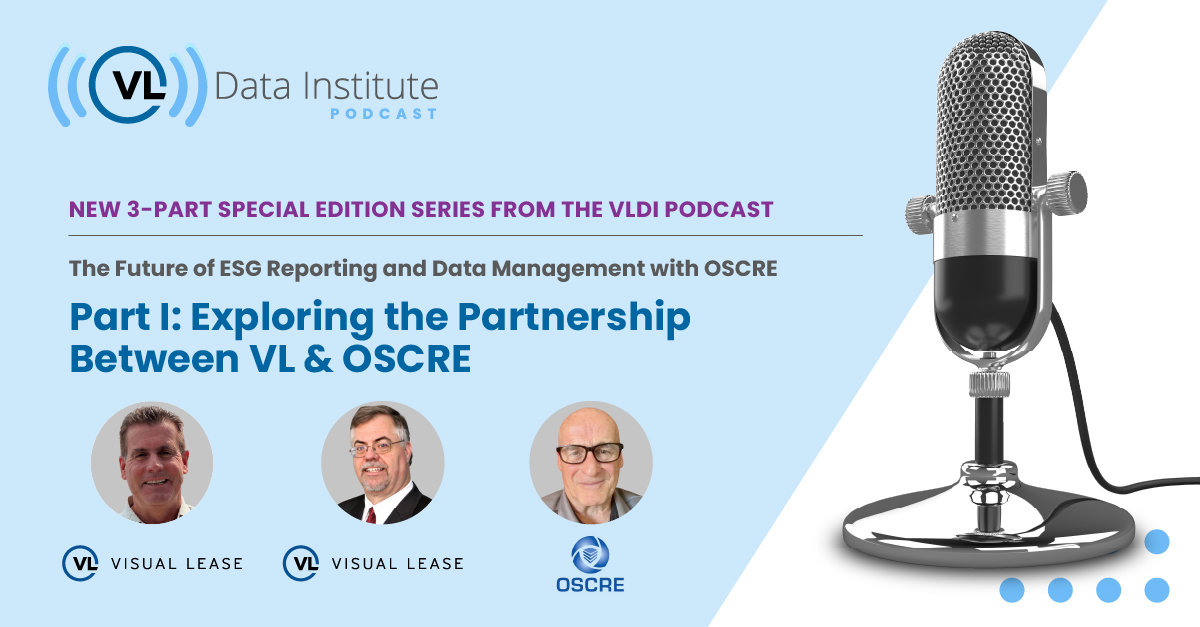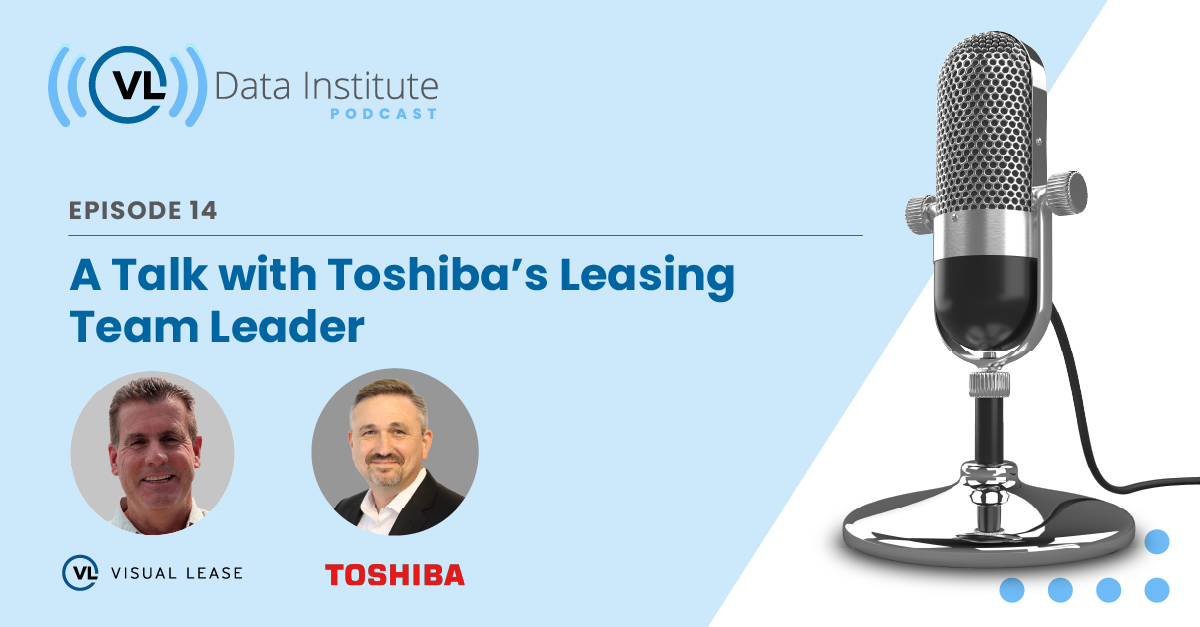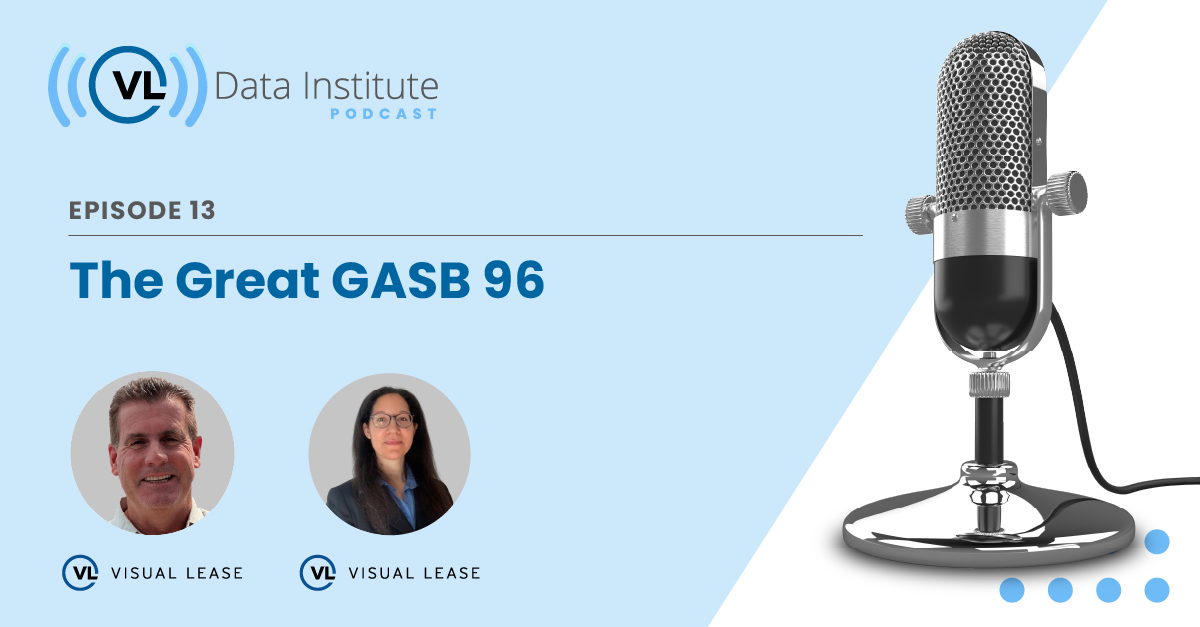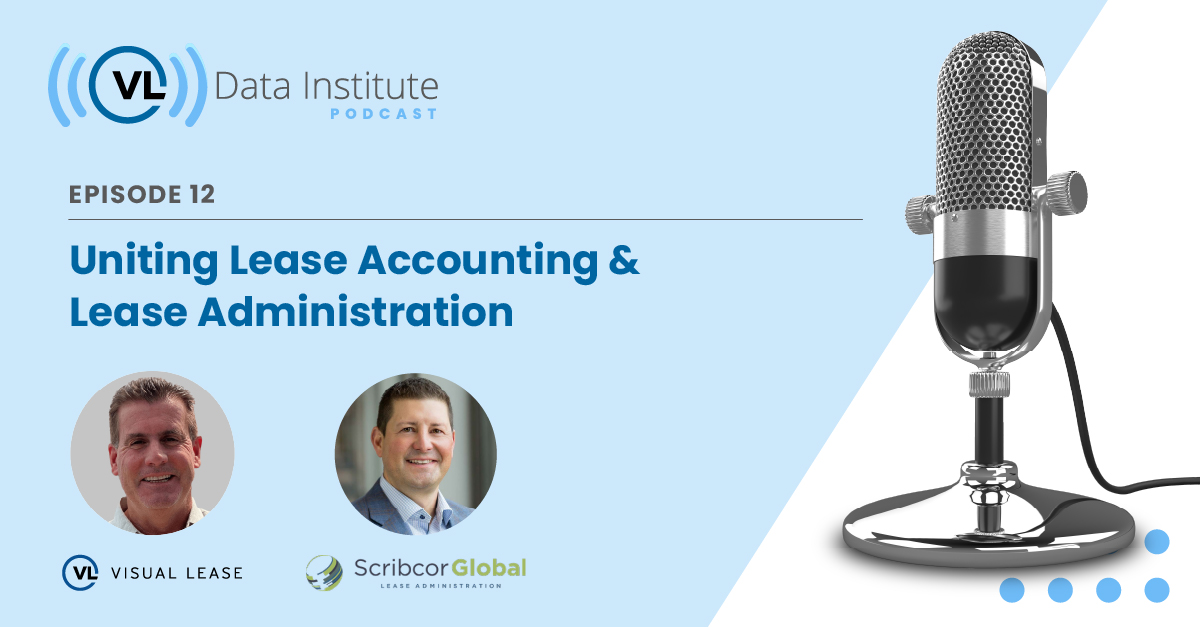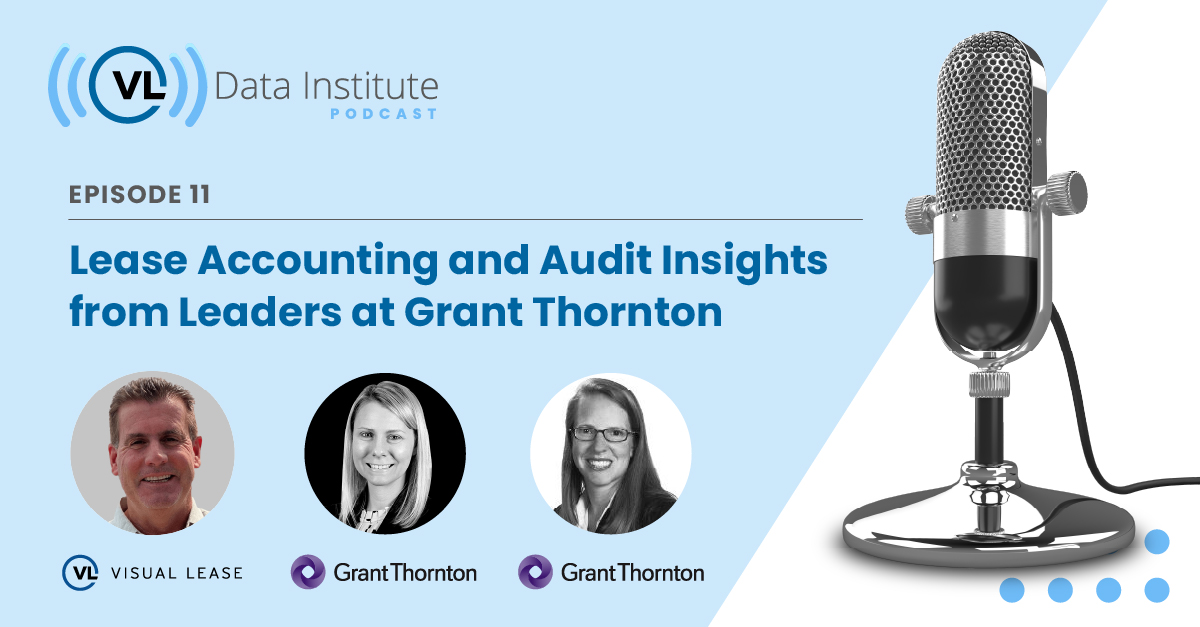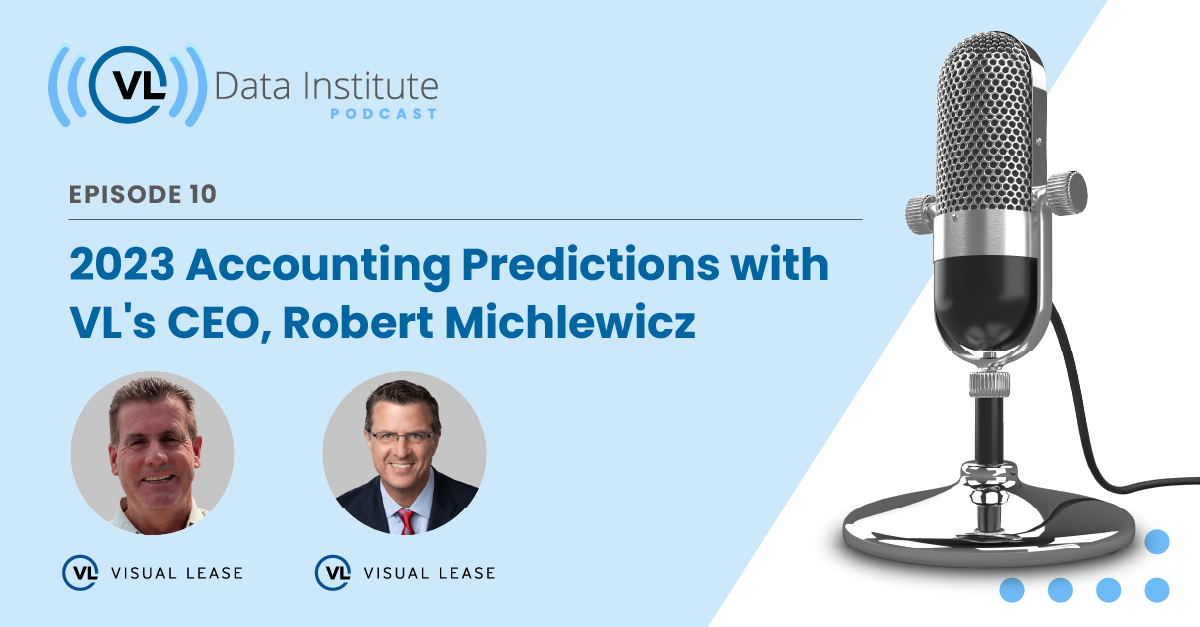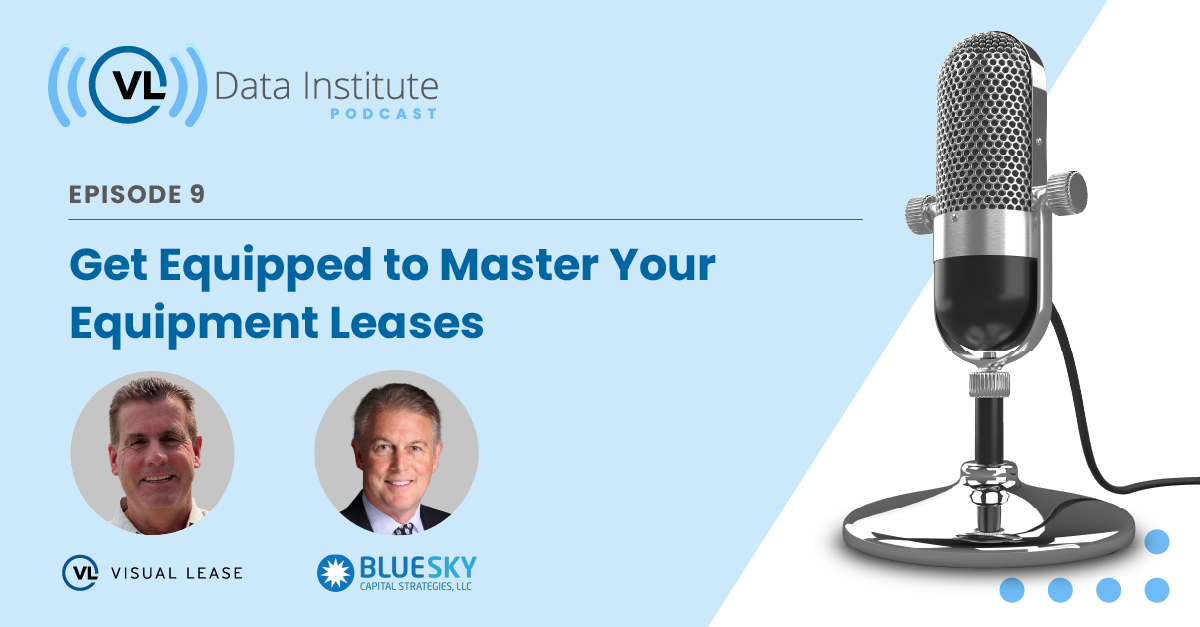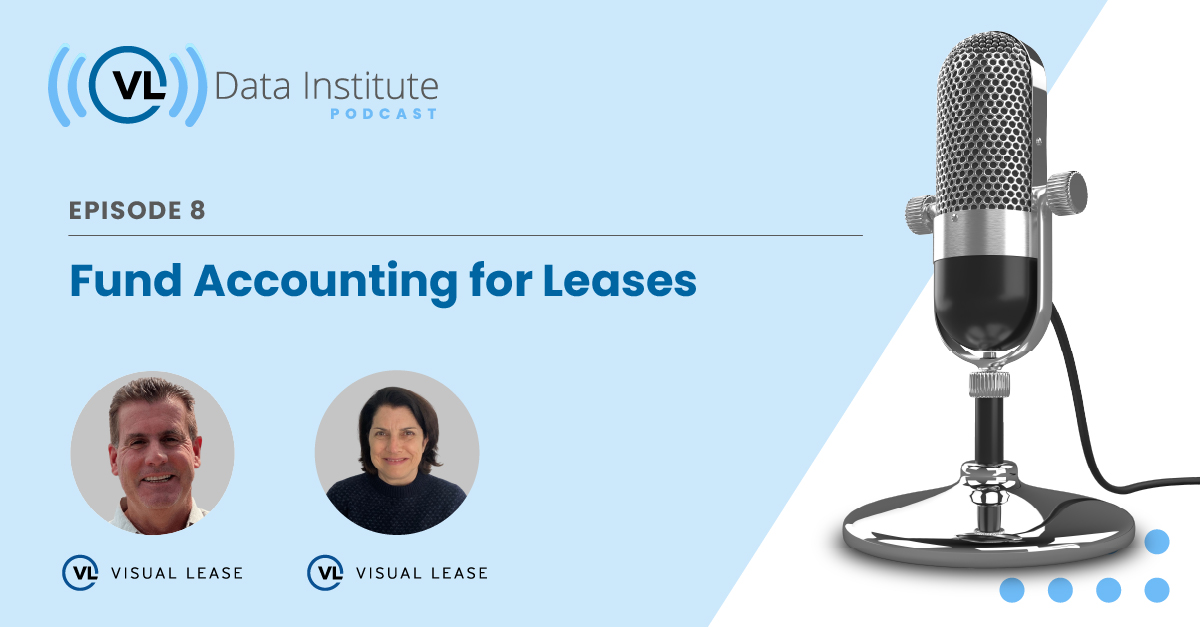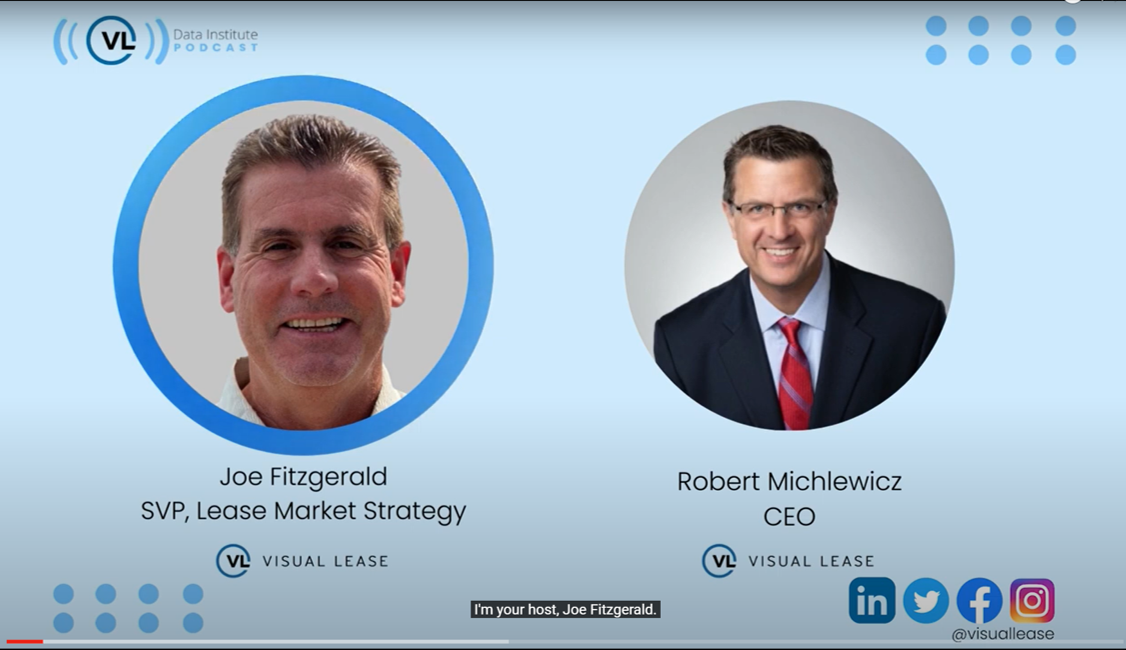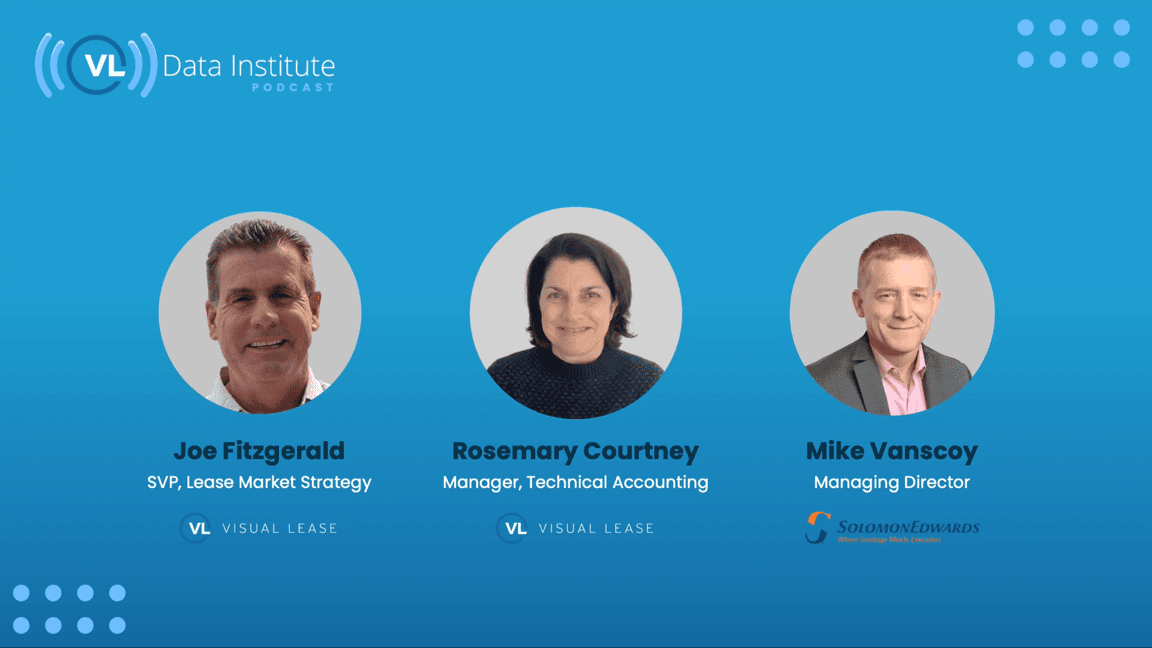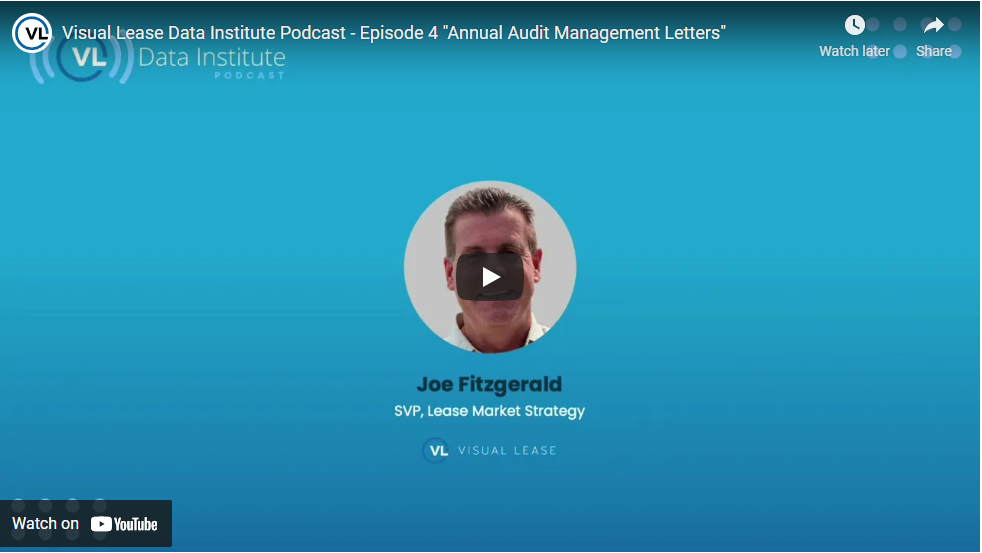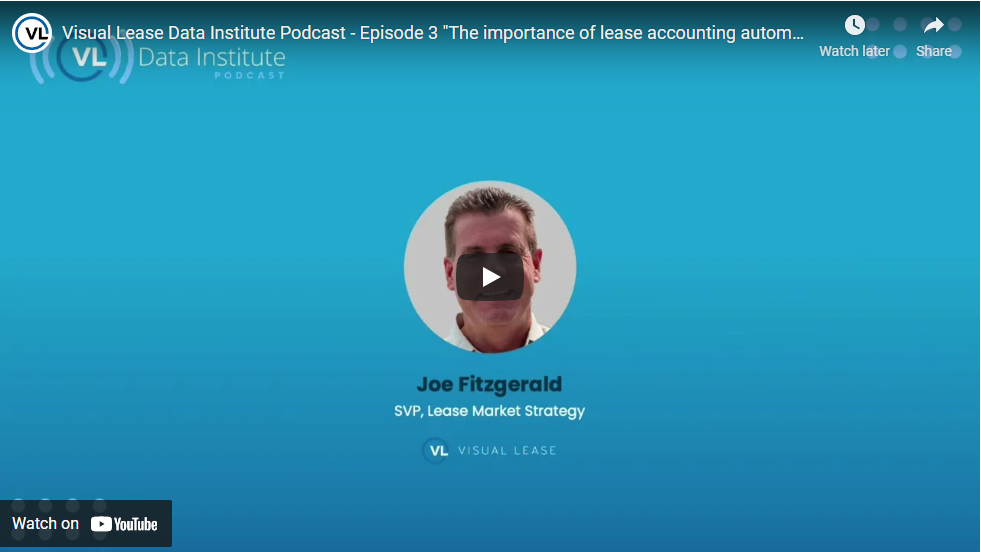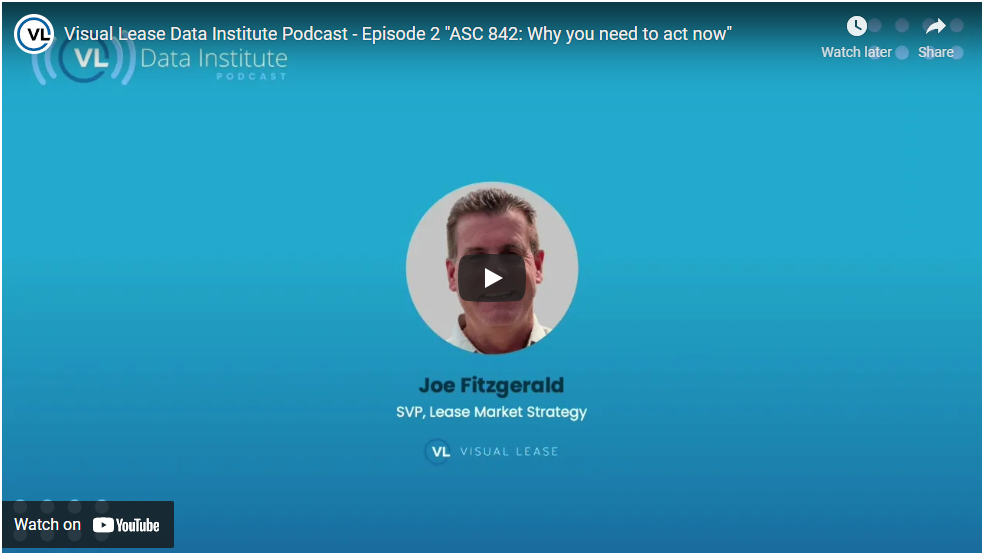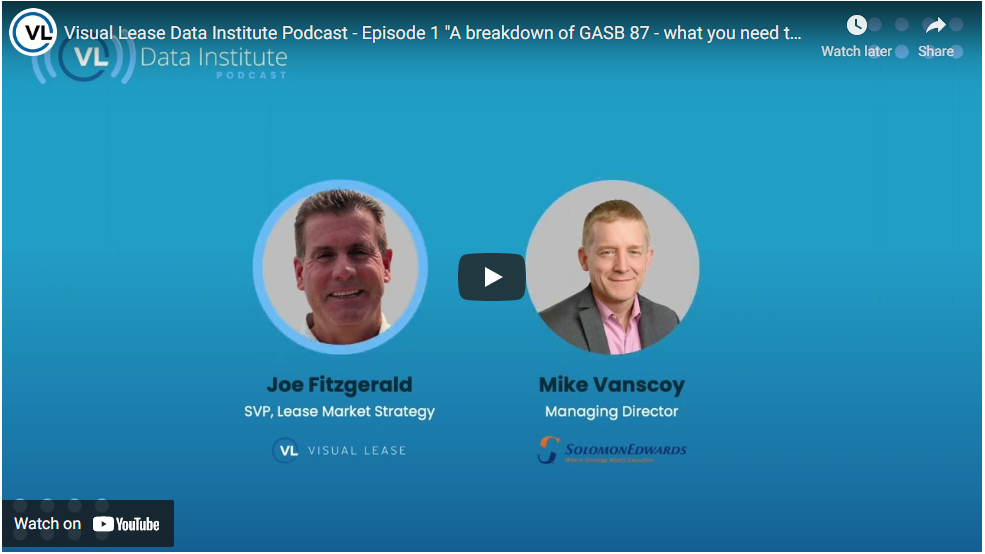GASB 96 is the latest standard government entities need to follow to accurately report its subscription-based IT arrangements (SBITAs). In this episode, our host, Joe Fitzgerald, sits down with lease accounting experts Mike Vanscoy, Managing Director at Solomon Edwards, and Rosemary Courtney, Technical Accounting Director at Visual Lease, and breaks down the differences between GASB 87 and GASB 96, along with what you need to know about subscription assets.
Read Transcript
VLDI Podcast Episode 5 Transcript
JOE:
Hi everyone, Joe Fitzgerald here, your host of the Visual Lease Data Institute Podcast. I’m the SVP of Lease Market Strategy at Visual Lease and we have an exciting topic to cover in this episode.
This time we’ll be discussing GASB 96 with my colleague Rosemary Courtney, our Technical Accounting Director here at Visual Lease. I’ll also be welcoming back Mike Vanscoy, Managing Director at Solomon Edwards Group.
Rosemary is a CPA with over 30 years of experience in financial leadership roles. She has worked as both a senior executive and CFO at public, private and not-for-profit companies, with a proven track record in growth strategies and profit margin improvements.
She also has extensive global experience in general accounting policy, financial closing and reporting under US GAAP, IFRS and SEC, along with technical expertise in complex non-recurring transactions and SOC controls.
Mike has more than 25 years of national and international experience in various aspects of technical accounting and financial reporting, financial accounting management, audit compliance, financial management standards and international policies, controls and procedures in IFRS, FASB and GASB environments. He has extensive experience in accounting and reporting for public offerings, mergers and acquisitions, debt and equity transactions and complex consolidation topics.
I’ve asked both Rosemary and Mike to join us here today to address a recent GASB standard that organizations will need to adopt: GASB 96.
So, let’s jump right in. What exactly is GASB 96 and why is it so important? Give us the 101 breakdown.
ROSEMARY:
GASB 96 has to do with subscription-based information technology arrangements. It’s about going through your contracts and identifying, as a government entity, SaaS agreements and putting them on balance sheet for the first time. Essentially, they’re trying to make consistent treatment of these types of contracts for state and local governments.
JOE:
With that background, last time I spoke with Mike, we discussed GASB 87. I’m curious – what do organizations need to do to prepare for GASB 96? And how does it compare to how they’re preparing for GASB 87?
MIKE:
The good news is if your organization has gone through GASB 87, GASB 96 is going to look a lot like GASB 87. What GASB 96 is doing, like what GASB 87 was doing, is providing some uniformity to reporting over a specific area.
What GASB 87 did for leases and putting all of the leases on the balance sheet and providing a solid set of guidelines for entities to follow, GASB 96 is doing the same thing for these subscription-based technology arrangements.
Just like under the lease standards, you’re going to now have an asset and a corresponding liability related to all of these agreements that you didn’t have before. If you haven’t gone through the adoption process on the new lease standard, you’re going to have to do a lot of digging through your agreements.
You’ll be reading agreements and understanding what qualifies under the guidelines of GASB 96 for these subscription-based agreements that need to be put on the balance sheets. Once you pull those all together and consolidate them, you can then start doing the same work that you did for GASB 87.
So, there are a lot of similarities and there are a lot of leveraging efficiencies, if you will, from what you’ve done or will do for GASB 87.
JOE:
With that in mind, I know a lot of public entities are adopting GASB 87 right now. What’s the timing on GASB 96, and why do you think it is that entities are not doing both at the same time?
ROSEMARY:
The consensus is that folks are still really kind of wrestling with their GASB 87 implementation, so they just really don’t have the people power right now to pivot. However, GASB 96 follows on the heels of GASB 87 and GASB 96 is effective after June 15, 2022, and for all reporting periods thereafter. Basically, it’s just (an issue of) capacity to get it implemented.
JOE:
Are there other groups that are going to be more prominent in the cross-functional activities around GASB 96 that maybe not as involved in the GASB 87 transition?
MIKE:
I think so. GASB 96 is going to be mostly an IT function because we’re talking about subscription-based information technology agreements. For the folks who work in IT and in governmental entities, they’re getting a double whammy, if you will, because under GASB 87, part of the work to adopt GASB 87 was looking for embedded leases and looking through all theircontracts to find elements of a lease.
We’ve asked that group, along with other groups, to go through all of their contracts and try to scope in or scope out leases. Now, that same group is going to have to go through even more work and go through all of their contracts to determine whether their arrangements with software providers meet the guidelines under GASB 96.
So, it’s the IT group in particular, along with accounting, because accounting has been involved in both of these in terms of collecting data, consolidating it and coming up with new mechanisms for reporting. That can refer to new accounts, reconciliations and all the things that come with financial reporting. I would say that IT and accounting are going to take the brunt of GASB 96, and IT will feel it more than they did with GASB 87.
JOE:
I was looking through the GASB 96 standard and noticed there’s discussion about certain costs and implementation costs around these contracts both before, during and after implementation. What do those costs entail?
ROSEMARY:
As Mike was describing, digging through contracts to look for embedded leases, with these SBITA agreements, there’s a deep dive required to find the different cost stages of a contract. There are preliminary project stage costs and then there are initial implementation stage and then operation and additional implementation stage.
Those are the three buckets, and each of those has to be identified because some are expenses incurred and some are capitalized. There’s a nuance and I think you were with me, Joe, a while ago, when we called GASB to walk through some of that.
Our initial instinct was that these are going to be hard to find. Often when you’re negotiating, they’re not always carved out. For example, sometimes your training costs are buried in the same contract. It goes to accounts payable, it’s all one.
It’s hard to identify the discrete cost items for the different accounting treatments. So, there’s a complexity there in finding the costs.
JOE:
As we know, these are not leases, but there’s obviously similarities.
Many entities have implemented some form of lease accounting technology for GASB 87. How do you see them leveraging that technology as they move into adopting GASB 96?
MIKE:
I think the technology needs are just as great as they were under GASB 87. What people have found is that, just like anyone who’s adopted the lease accounting standards, whether in the private or the governmental area, is that Day 1, you can calculate everything. However, with Day 2, software does all the necessary work, from reporting to consolidation, that makes your life easier.
Luckily, GASB 87 and GASB 96 are similar. In fact, many of the terms are similar: we have a right-to-use asset under both, we have a lease liability under GASB 87 and we have a subscription liability under GASB 96.
We’re talking about, conceptually, two standards that are very much alike, one’s for leases and one’s very specific for information technology agreements. If you’re using software and you’ve gotten used to the software that you use for GASB 87, stick with that for GASB 96. If you’re looking at software for GASB 87, I would recommend that while you’re looking at software for GASB 87, consider that same software provider for GASB 96.
I’m sure providers, such as Visual Lease, have options for GASB 96. Once you’ve gotten used to the GASB 87 accounting and the GASB 87 reporting, GASB 96 is going to be so much easier. You’ll be able to leverage everything that you’ve learned from using the software for GASB 87.
JOE:
That certainly makes a lot of sense. You might as well leverage existing software rather than go out and get another solution. Rosemary and Mike, do you have any closing thoughts on GASB 96?
ROSEMARY:
My hunch is, and you might be able to clarify this for me, but observing with the GASB 87 implementation is a little bit more of a difficult transition, whereas GASB 96 should be more discrete because it’s new.
There’s not as much of a look back and find for an opening balance restatement. I think it won’t be as heavy of a lift, that’s my hunch.
MIKE:
Agreed. I think what the heavy lift is, or the issue for most entities, is the same record you hear played over and over again everywhere. There’s just not enough bandwidth for most of these organizations to do their current day jobs and turn around and adopt a couple of significant standards, like GASB 87 and GASB 96.
I also agree with Rosemary that GASB 96, in theory, should be easier because it’s very much focused on information technology agreements, whereas GASB 87 was broad. It was about looking at all your agreements, particularly service agreements of any type, and try to make sure that there’s not a lease in there, or if there is a lease, that you account for it properly.
I think bandwidth is going to be the biggest issue. The other big issue, in terms of both standards, represents a significant change in the way we approach recording these items. Leases were always one of those things that were always off balance sheet, and were mainly an operating expense, unless they were capital leases.
These subscription agreements with technology, we’re using software, we’re using assets and we’re paying a monthly fee. Those have been viewed as mainly expenses because we didn’t think we bought anything, we weren’t buying assets that we were using.
Both standards represent a wholesale change in the way we think and approach these items. I think that’s the biggest lift: asking people to turn around their reporting processes and the way they use their internal controls, over these items.
JOE:
Rosemary, Mike, great insights. Thanks again, I really enjoyed chatting with you both and taking the time to discuss GASB 96.











